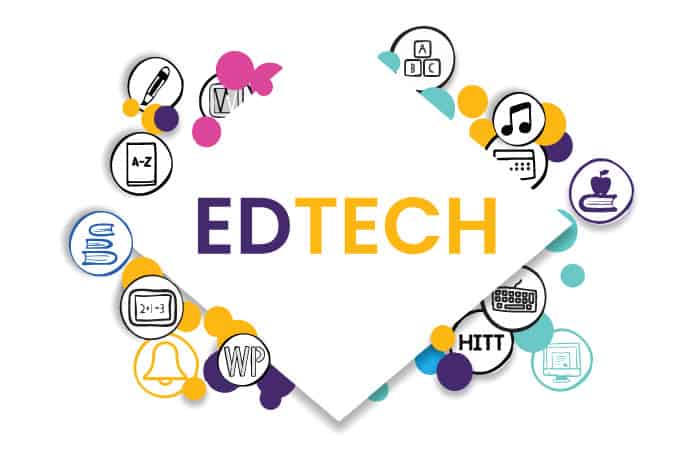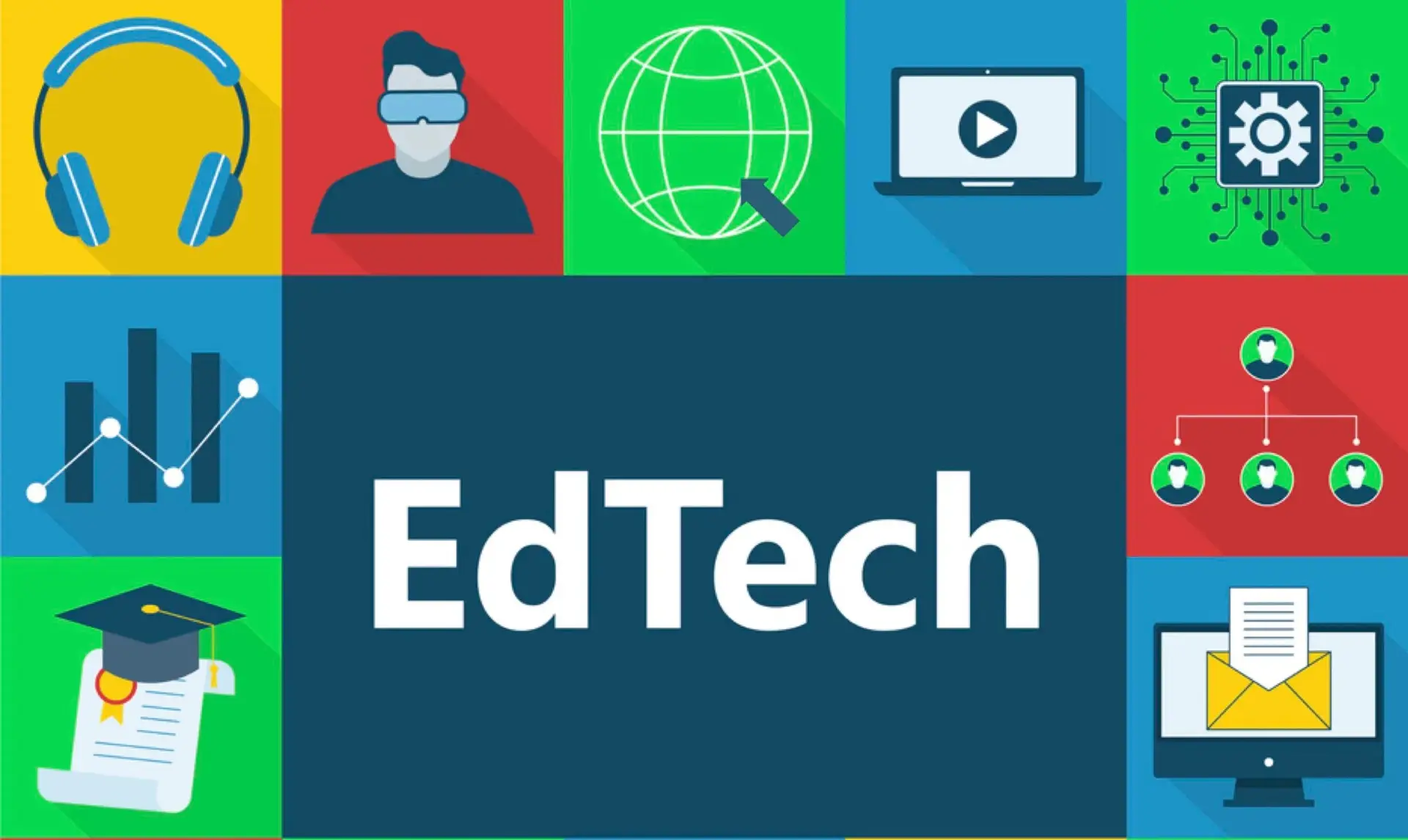How to Choose the Right EdTech Tools for Your School
Choosing the right Edtech for school can feel like navigating a maze blindfolded. With countless options vying for your attention, it’s easy to get lost in the hype and end up with technology that gathers dust in the corner of your classroom.
But fear not, fellow educators! I’m here to equip you with the knowledge and insights you need to make informed decisions that will transform your school into a vibrant hub of 21st-century learning.
- Defining your school's needs
- Exploring Edtech options
- Evaluating technology
- Teacher training
- Pilot testing
- Assessing impact
In this comprehensive guide, we’ll delve deep into the world of educational technology, exploring the key factors to consider when choosing the right tools for your school. Whether you’re a seasoned tech enthusiast or just beginning your Edtech journey, this post will provide you with a clear roadmap to success.
Defining your needs to implement Edtech for school
Before you even start browsing Edtech catalogues or attending flashy product demos, take a step back and define your school’s unique needs and goals. Think of it as laying the foundation for a successful Edtech implementation. What challenges are you facing that technology could potentially address?
Perhaps you’re looking to personalize the learning experience for students with diverse learning styles. Or maybe you want to boost student engagement in STEM subjects. Are you aiming to streamline administrative tasks and improve communication between teachers and parents?
By clearly identifying your needs, you’ll be able to narrow down your options and choose Edtech for school that truly aligns with your vision. This targeted approach ensures that your investment translates into tangible benefits for your students and teachers.
Conducting a needs assessment
To gain a deeper understanding of what educational technology resources you need, consider conducting a comprehensive needs assessment on the following:
- Students: Survey students to understand their learning preferences, challenges, and technology experiences.
- Teachers: Conduct interviews or focus groups with teachers to identify their needs and perspectives on technology integration.
- Administrators: Gather input from school leaders on their vision for Edtech and their expectations for its impact.
- Parents: Survey parents to understand their perspectives on technology use in education and their expectations for communication and involvement.
By analyzing the data from your needs assessment, you can identify key areas where Edtech can make a significant difference. This data-driven approach will guide your decision-making and ensure that you choose technology that effectively addresses your school’s unique challenges and goals.
Exploring edtech options

Now that you have a solid grasp of your school’s needs, it’s time to embark on an exciting exploration of the vast Edtech landscape. Think of it as a treasure hunt, where you’re searching for the perfect tools to enhance your school’s learning environment.
The Edtech market is brimming with innovative solutions, each with its own strengths and weaknesses. To navigate this landscape effectively, it’s helpful to familiarize yourself with the different categories of Edtech available.
Categories of edtech
Here’s a quick overview of some key Edtech categories to consider:
Learning management systems (LMS)
These platforms serve as a central hub for managing courses, delivering content, and tracking student progress.
Adaptive learning platforms
These AI-powered systems personalize the learning experience by adjusting the content and pace to each student’s needs. PathBuilder, developed by Makarius Smart Learning, is a prime example of an adaptive learning platform designed to cater to diverse learning styles.
Assessment tools
From online quizzes to sophisticated data analytics platforms, these tools help you measure student understanding and identify areas for improvement. Examples include formative assessment tools like Kahoot! and summative assessment platforms like Google Forms.
Collaboration and communication tools
These facilitate interaction and knowledge sharing among students and teachers. Examples include video conferencing platforms like Zoom, online discussion forums, and collaborative document editing tools like Google Docs.
Virtual reality (VR) and augmented reality (AR)
These immersive technologies offer engaging, hands-on learning experiences that can transport students to different times and places, bringing learning to life.
Evaluating technology
With a plethora of Edtech options at your fingertips, it’s crucial to evaluate each solution carefully to determine its suitability for your school. Think of it as a detective investigation, where you’re gathering evidence to make an informed decision.
Beyond the flashy features and marketing promises, consider the following factors when evaluating Edtech:
Alignment with pedagogy

Does the technology support your school’s teaching methods and curriculum goals? For instance, if you emphasize project-based learning, you’ll want technology that facilitates collaboration and creativity.
Ease of use
Is the technology user-friendly and intuitive for both teachers and students? A complex interface can hinder adoption and create frustration.
Cost and value
Does the technology offer a good return on investment?
Key evaluation criteria
To ensure a comprehensive evaluation, consider these key criteria:
- Features and functionality: Does the technology offer the features you need to achieve your goals?
- Integration: Does it integrate seamlessly with your existing systems and platforms?
- Accessibility: Is the technology accessible to students with diverse learning needs?
- Data Privacy and security: Does the technology comply with data privacy regulations and ensure the security of student information?
- Technical support: Does the vendor provide adequate training, documentation, and ongoing technical support?
By thoroughly evaluating each Edtech option against these criteria, you can make informed decisions that align with your school’s needs and priorities.
Teacher training
Investing in robust teacher training is paramount to the success of any Edtech implementation. Think of it as equipping your teachers with the skills and confidence they need to navigate the digital landscape effectively.
Effective teacher training goes beyond simply teaching how to use the technology. It should also focus on:
- Pedagogical strategies: How can the technology be used to enhance teaching and learning?
- Best practices: What are some effective ways to integrate the technology into the classroom?
- Troubleshooting: How can teachers address common technical issues?
Creating a supportive learning environment
To foster a culture of technology integration, create a supportive learning environment where teachers feel comfortable experimenting and sharing their experiences.
- Provide ongoing support: Offer continuous professional development opportunities and mentorship programs to help teachers stay up-to-date with the latest Edtech trends and best practices.
- Encourage collaboration: Facilitate peer-to-peer learning and knowledge sharing through workshops, online forums, and communities of practice.
- Celebrate success: Recognize and celebrate teachers who are effectively integrating technology into their classrooms.
By investing in comprehensive teacher training and creating a supportive learning environment, you can empower your teachers to become confident and effective users of Edtech.
Pilot testing

Before rolling out any new technology school-wide, it’s wise to conduct a pilot test with a small group of teachers and students. Think of it as a dress rehearsal, allowing you to identify any potential challenges and refine your implementation plan.
During the pilot phase, gather feedback on:
- Ease of use: How easily can teachers and students navigate the technology?
- Engagement: Are students more engaged in learning with the new technology?
- Effectiveness: Is the technology helping students achieve learning objectives?
- Technical issues: Are there any glitches or technical difficulties that need to be addressed?
Gathering feedback
To gather comprehensive feedback, use a variety of methods:
- Surveys: Gather quantitative and qualitative data from teachers and students.
- Observations: Observe how teachers and students are using the technology in the classroom.
- Focus groups: Conduct focus group discussions to gather in-depth feedback and insights.
- Data analysis: Analyze student data to assess the impact of the technology on learning outcomes.
By carefully analyzing the feedback from the pilot test, you can identify areas for improvement and make necessary adjustments before full implementation. This iterative approach ensures a smoother transition and increases the likelihood of successful Edtech adoption.
Assessing impact
Once you’ve fully implemented the new Edtech, it’s crucial to regularly assess its impact on student learning outcomes and engagement. Think of this as measuring the return on your Edtech investment. You want to see if the technology is truly making a difference in the classroom.
To effectively assess impact, you need to gather data from various sources and analyze it to identify trends and patterns. This data-driven approach will help you understand the effectiveness of your Edtech implementation and make informed decisions about future technology adoption.
Data collection methods
Here are some effective data collection methods for assessing Edtech impact:
- Pre- and post-tests: Compare student performance before and after using the technology to measure learning gains.
- Student surveys: Gather feedback from students on their experiences with the technology and its impact on their learning.
- Teacher observations: Observe classroom activities and gather anecdotal evidence on how the technology is being used and its impact on student engagement and learning.
- Data analytics: Use data analytics platforms to track student progress, identify areas of strength and weakness, and personalize learning experiences.
- Portfolio assessments: Have students create digital portfolios to showcase their learning and demonstrate their growth over time.
Analyzing data and making adjustments

Once you’ve collected data, analyze it to identify trends and patterns. Look for evidence of:
- Improved learning outcomes: Are students demonstrating a deeper understanding of concepts? Are they achieving higher scores on assessments?
- Increased engagement: Are students more actively participating in class? Are they more motivated to learn?
- Development of 21st-century skills: Are students developing critical thinking, collaboration, and problem-solving skills?
Based on your analysis, make necessary adjustments to your Edtech implementation. This might involve providing additional teacher training, modifying how the technology is used in the classroom, or even reconsidering your choice of technology.
Remember, assessing impact is an ongoing process. Regularly collect and analyze data to ensure that your Edtech is continually supporting your school’s goals and improving student learning outcomes.
Making informed decisions for long-term sustainability
Choosing the right Edtech for school is not a one-time decision. It’s an ongoing process that requires careful planning, evaluation, and adaptation. Think of it as a long-term partnership, where you’re selecting Edtech solutions that will grow and evolve with your school.
When making decisions about Edtech, consider the long-term sustainability and scalability of the solutions. You want to choose technology that will continue to meet your needs as your school grows and changes.
Factors to consider for long-term sustainability
- Scalability: Can the technology accommodate an increasing number of users and devices?
- Integration: Does the technology integrate with other systems and platforms used by your school?
- Vendor support: Is the vendor committed to ongoing innovation and development? Will they provide continued support and updates?
- Total cost of ownership: Consider the long-term costs of the technology, including licensing fees, maintenance, and upgrades.
- Flexibility: Can the technology adapt to changing educational needs and trends?
By considering these factors, you can ensure that your Edtech investments support your school’s long-term vision for educational excellence.
Building a platform for educational technology resources

To create a sustainable Edtech ecosystem, consider these strategies:
- Develop a clear Edtech vision and strategy: Align your Edtech choices with your school's overall mission and goals.
- Foster a culture of innovation and continuous improvement: Encourage teachers to experiment with new technologies and share best practices.
- Stay informed about Edtech trends: Keep abreast of the latest developments in Edtech to make informed decisions about future investments.
- Build partnerships with Edtech providers: Collaborate with vendors to ensure that their solutions meet your school's specific needs.
By taking a strategic and long-term approach to Edtech adoption, you can create a sustainable and thriving learning environment where technology empowers both teachers and students.
Wrapping up
As we wrap up this deep dive into the world of educational technology, I hope you feel equipped and empowered to make informed decisions for your school. Remember, choosing the right Edtech is an investment in the future of your students and your school.
In this guide, we explored the key steps involved in selecting and implementing Edtech for school, from defining your needs to assessing impact and ensuring long-term sustainability.
- Define your needs
- Explore Edtech options
- Evaluate technology
- Teacher training
- Pilot testing
- Assess impact
Now it’s your turn to take the reins and embark on your Edtech journey. Remember, I’m here to cheer you on and offer guidance along the way. Here’s to creating a brighter future for education, one click at a time!
Author
-

The PathBuilder team is a dynamic group of dedicated professionals passionate about transforming education through adaptive learning technology. With expertise spanning curriculum design, AI-driven personalization, and platform development, the team works tirelessly to create unique learning pathways tailored to every student’s needs. Their commitment to educational innovation and student success drives PathBuilder’s mission to redefine how people learn and grow in a rapidly changing world.
View all posts

















The PathBuilder team is a dynamic group of dedicated professionals passionate about transforming education through adaptive learning technology. With expertise spanning curriculum design, AI-driven personalization, and platform development, the team works tirelessly to create unique learning pathways tailored to every student’s needs. Their commitment to educational innovation and student success drives PathBuilder’s mission to redefine how people learn and grow in a rapidly changing world.